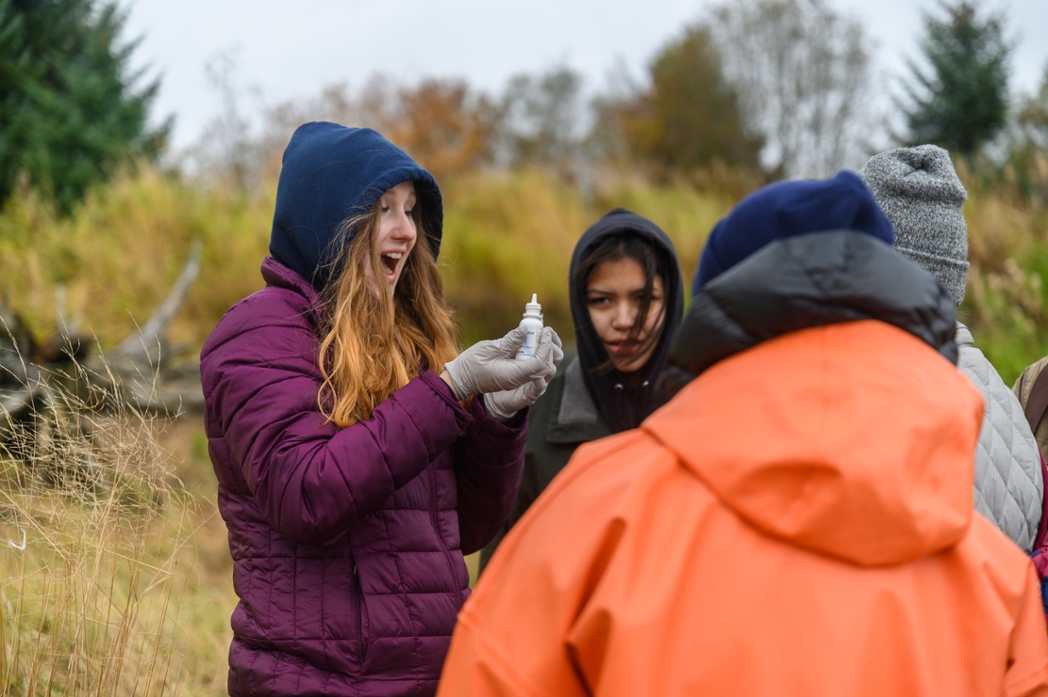Juneau students work with ACRC scientist to measure water quality

A steady curtain of rain falls over the banks of the Mendenhall River, but you’d never know it from the high spirits of Thunder Mountain students who have been working in the drenching conditions for over an hour. The students collect water samples in chest-high waders, armed with small vials and temperature probes. A group onshore inspects sediment and invertebrates collected from the stream bed. They are part of an ongoing program led by science educators Adriana Northcutt and Kristen Wells to engage eleventh- and twelfth-grade biology students in studying the Mendenhall watershed and impacts of water quality on salmon habitat.
ACRC researcher Jason Fellman is one of the local scientists teaching the students about water quality parameters and sampling techniques. Fellman guides them through the collection of water quality indicators such as pH, temperature, salinity, dissolved oxygen, and turbidity, explaining what these measurements can tell you about salmon habitat and water quality in general. With guidance from Fellman and Northcutt, the students’ measurements could contribute to a larger dataset of water quality parameters being recorded in Juneau watersheds.
“These are basic measurements of water quality that cost little to take, and you can collectively bring these things together and paint a little picture of the aquatic environment that’s surrounding them and how that might impact fish,” said Fellman. While leading the field biology class through sampling protocols, Fellman also enjoyed trying to get students excited about science and demonstrating that research can be fun. “That’s another thing I was trying to convey to them, that this is exciting and useful,” he said.
The program, led by Northcutt and Wells, is funded by the Arctic and Earth STEM Integrating GLOBE and NASA project, and will hopefully continue with a new set of Thunder Mountain biology students in the spring. Fellman currently shares his expertise as a volunteer but hopes the program is just the start of what could be a larger effort to get students at multiple age levels and schools involved in field science around Juneau. “[The students] could routinely collect basic water quality measurements in streams near their local schools, and hopefully that would enable them to build a better connection to the environment they live in,” Fellman added.
For a scientist, working with students is a valuable way to connect research objectives to a broader audience. “It definitely makes me think about how I say things; you need to explain things more clearly or in a way that they can relate to. I think that helps me in trying to frame the research that we’re doing: why it’s important and why it might be useful, as well as why people might be interested or find value in it,” said Fellman.
This work is funded by the Arctic and Earth STEM Integrating GLOBE and NASA project, supported by NASA under Award No. NNX16AC52A.